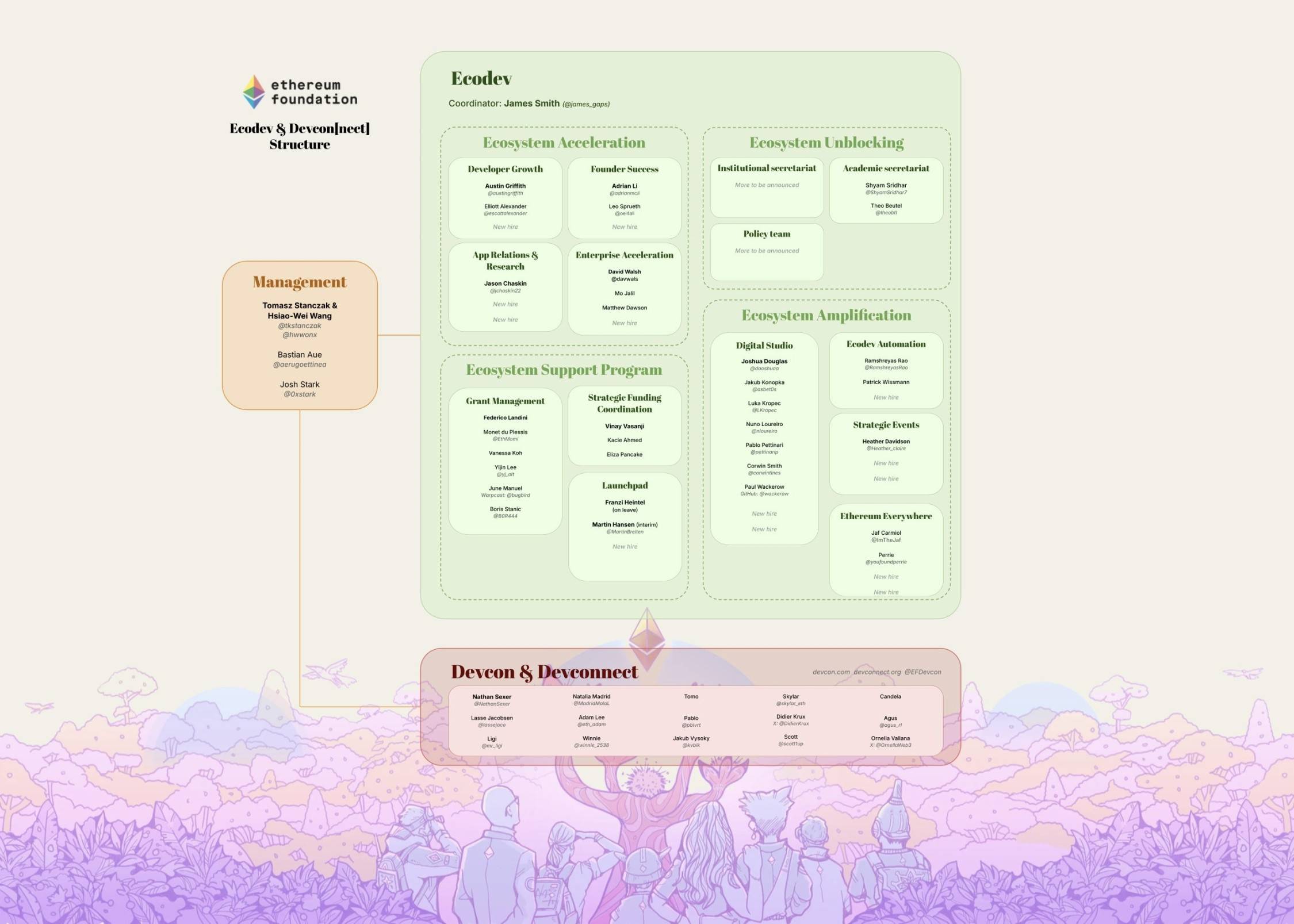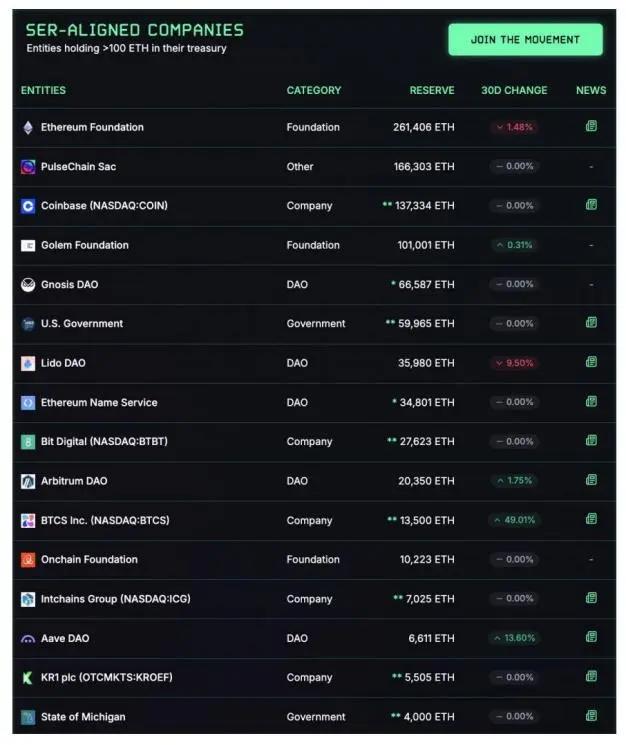Written by: Pzai, Foresight News
On July 10th, the Ethereum Foundation released "The Future of Ecosystem Development", launching a series of profound structural reforms aimed at addressing long-standing challenges in project support, ecosystem operations, and fund management.
In the new vision statement, the Ethereum Foundation outlined two primary overall goals: first, maximizing the number of people who directly or indirectly use Ethereum and benefit from its underlying values; second, maximizing the resilience of Ethereum's technological and social infrastructure. The core of this structural reform lies in redefining the Foundation's role in the Ethereum ecosystem by introducing four strategic pillars (accelerate, amplify, support, and long-term clearing), establishing a new governance framework, and reforming its fund management strategy to enhance the ecosystem's scalability, resilience, and decentralization.

New Ecodev Organizational Structure
Ecosystem Acceleration
Previously, some users and developers criticized the Ethereum Foundation for its long-standing "hands-off" governance philosophy, which led to ecosystem fragmentation and loss of narrative identity. As more enterprises compete to establish crypto reserves, reserve strategies have become a key factor in ecosystem development. In ecosystem acceleration, the Ethereum Foundation has established new support modules for specific directions, including:
Enterprise Relations: Providing support for enterprises looking to adopt Ethereum, with the team focusing on serving vertical fields such as finance and supply chain, promoting on-chain tokenization of real-world assets (RWA).
Developer Growth: Attracting and supporting the next generation of Ethereum ecosystem developers. This module is led by Gitcoin's Research Lead, Austin Griffith.
Application Support: Accelerating the construction of meaningful user-facing applications.
Founder Support: Non-financial project-related support, led by Adrian Li, former frontend technology director at ConsenSys.
The previous ecosystem acceleration's amplification covered work in promotion and ecosystem development, including:
Digital Studio (ethereum.org team): Ethereum's narrative engine, producing narrative-rich content, videos, publications, and unique visualizations to showcase Ethereum's potential.
Strategic Events: Designing and executing targeted events.
Ubiquitous Ethereum: A team focused on expanding local communities and centers supporting application developers.
EcoDev Automation: Enhancing internal operations through automation and AI-driven tools to help the team more effectively achieve its goals.
Ecosystem Support
For a long time, the Ethereum Foundation has been criticized for lack of transparency, such as in the Ecosystem Support Program (ESP), where the Foundation previously only disclosed the names of funded projects without publishing specific funding amounts or subsequent project updates. Previously, early Ethereum developer @econoar criticized the Foundation for being "process-heavy", "time-consuming", and "disconnected from the broader community". Subsequently, the Foundation reduced its future operational expenditure from 15% to 5% in 2025, gradually approaching the standards of a donation-type institution, and deployed on-chain assets to ensure long-term financial buffer (targeting to maintain 2.5 years of operational cash reserves).
In the new structural reform, the Foundation's new ESP/support program emphasizes more targeted applications and non-financial support, and co-funds important public goods organizations through strategic grant programs to benefit the broader Ethereum ecosystem. Additionally, in the new support structure, Launchpad will assist organizations in addressing operational design, sustainable funding, governance, and other challenges. Launchpad support can come from the Foundation, grantees, or derivative products from other ecosystem organizations (similar to Protocol Guild).
In the future, the Ethereum Foundation will also participate in global crypto policy coordination, monitor global issues related to the Ethereum ecosystem, and collaborate with policy organizations worldwide, establishing ongoing relationships with governments and non-governmental organizations. Moreover, as one of the practical venues for blockchain academia, the Academic Secretariat will actively promote Ethereum's collaboration with universities, professors, and students to advance blockchain technology.
Conclusion
On July 11th, Ethereum officially broke through $3,000. As the price rises, ecosystem development is gradually progressing. From this structural transformation, the Ethereum Foundation's core transformation goal is to expand the user base and enhance infrastructure resilience. It means the Foundation will more proactively coordinate resources, guide narratives, bridge community divisions, and promote large-scale implementation in key application areas while maintaining Ethereum's core values. As public chain advantages are gradually being caught up, the Foundation is attempting to excavate and shape the next growth engine for the Ethereum ecosystem through systematic support and strategic guidance.








